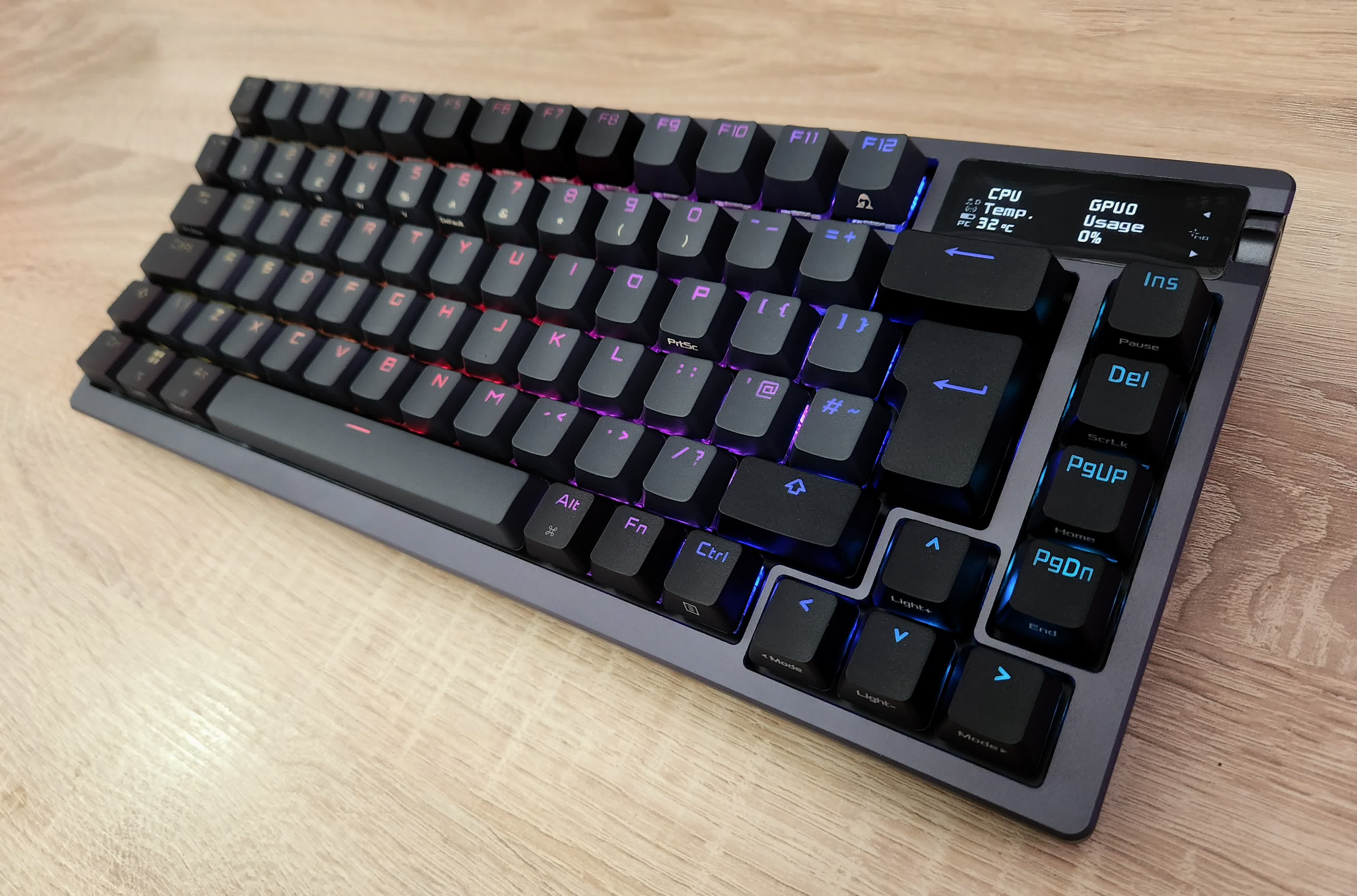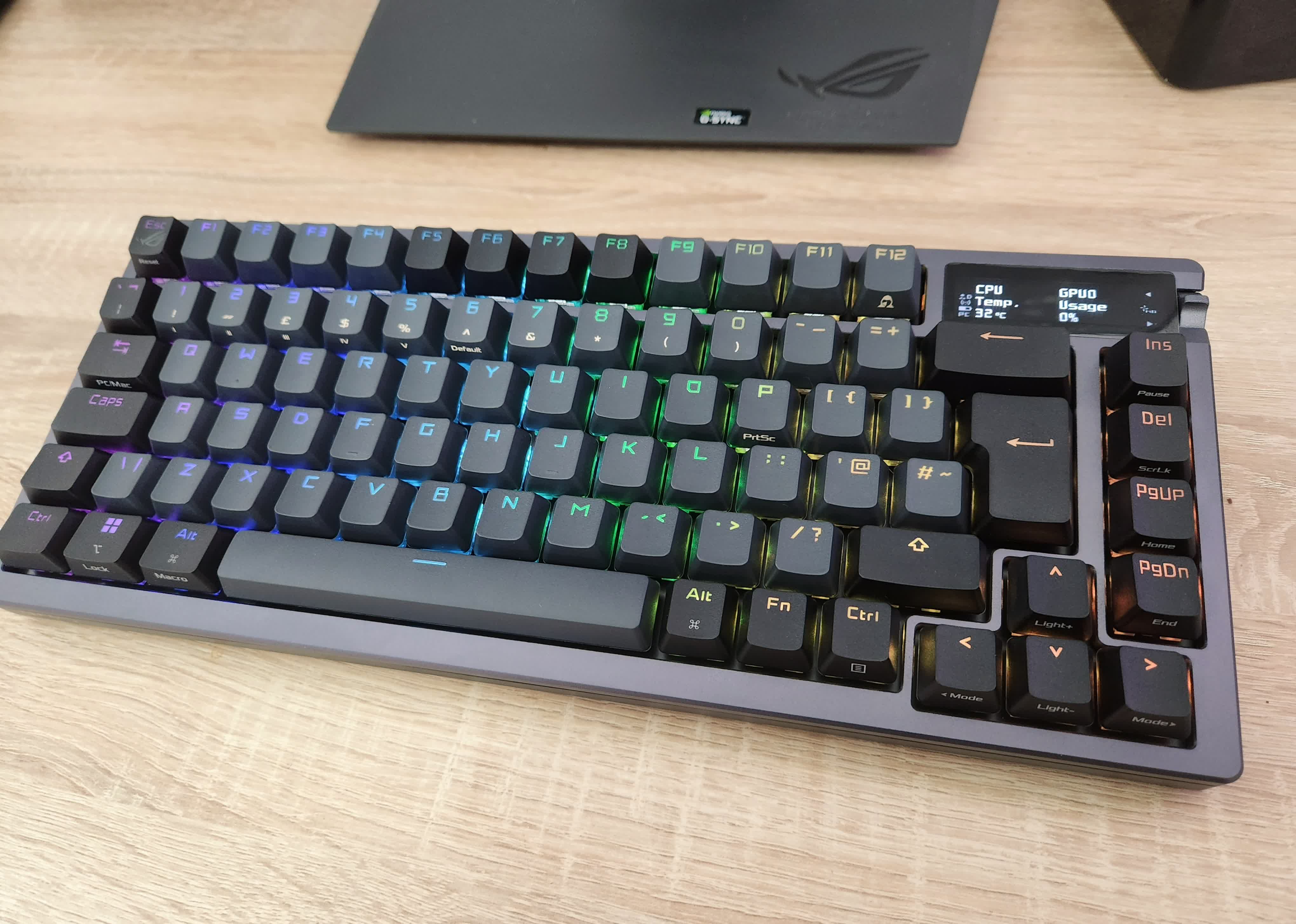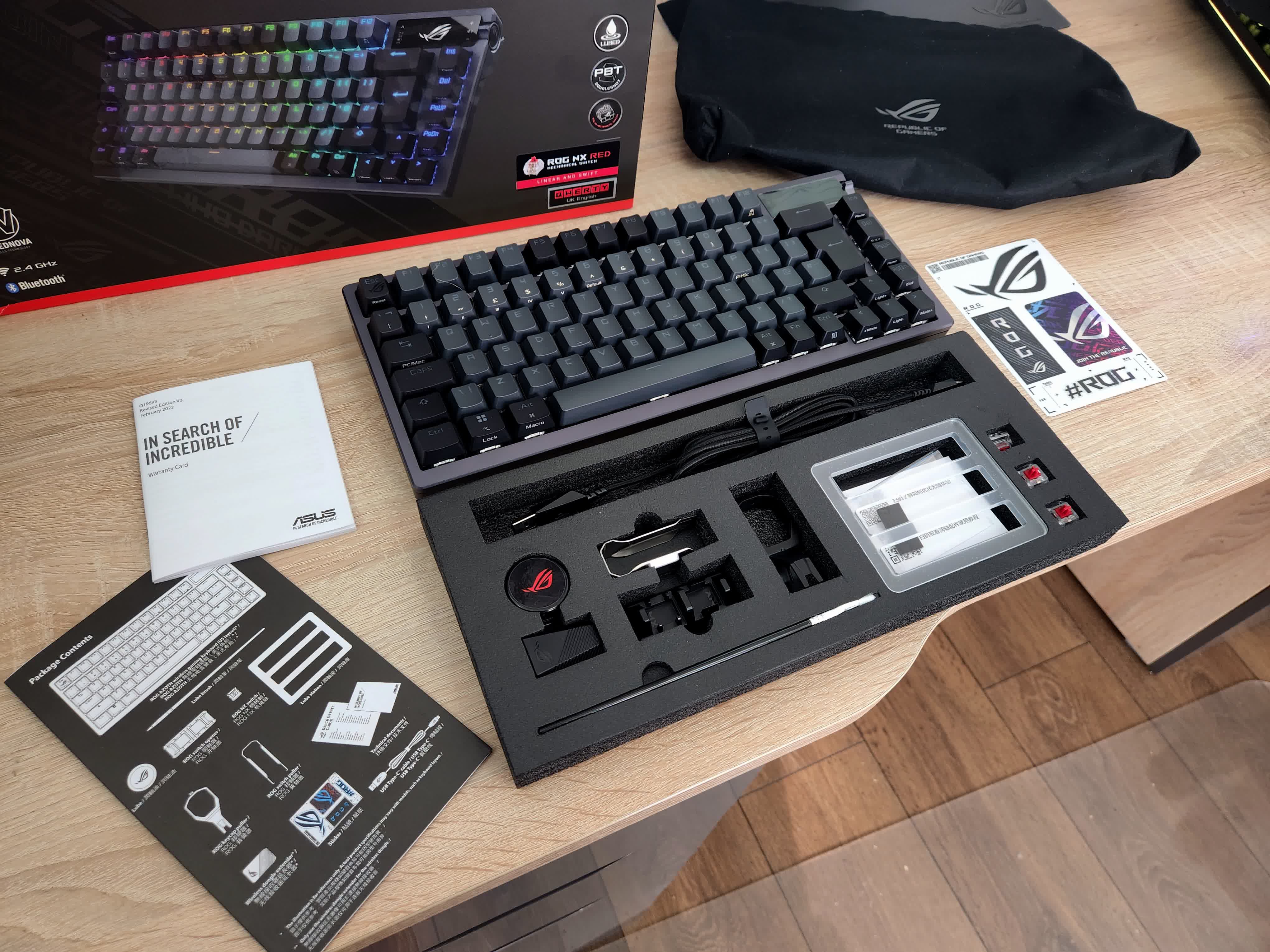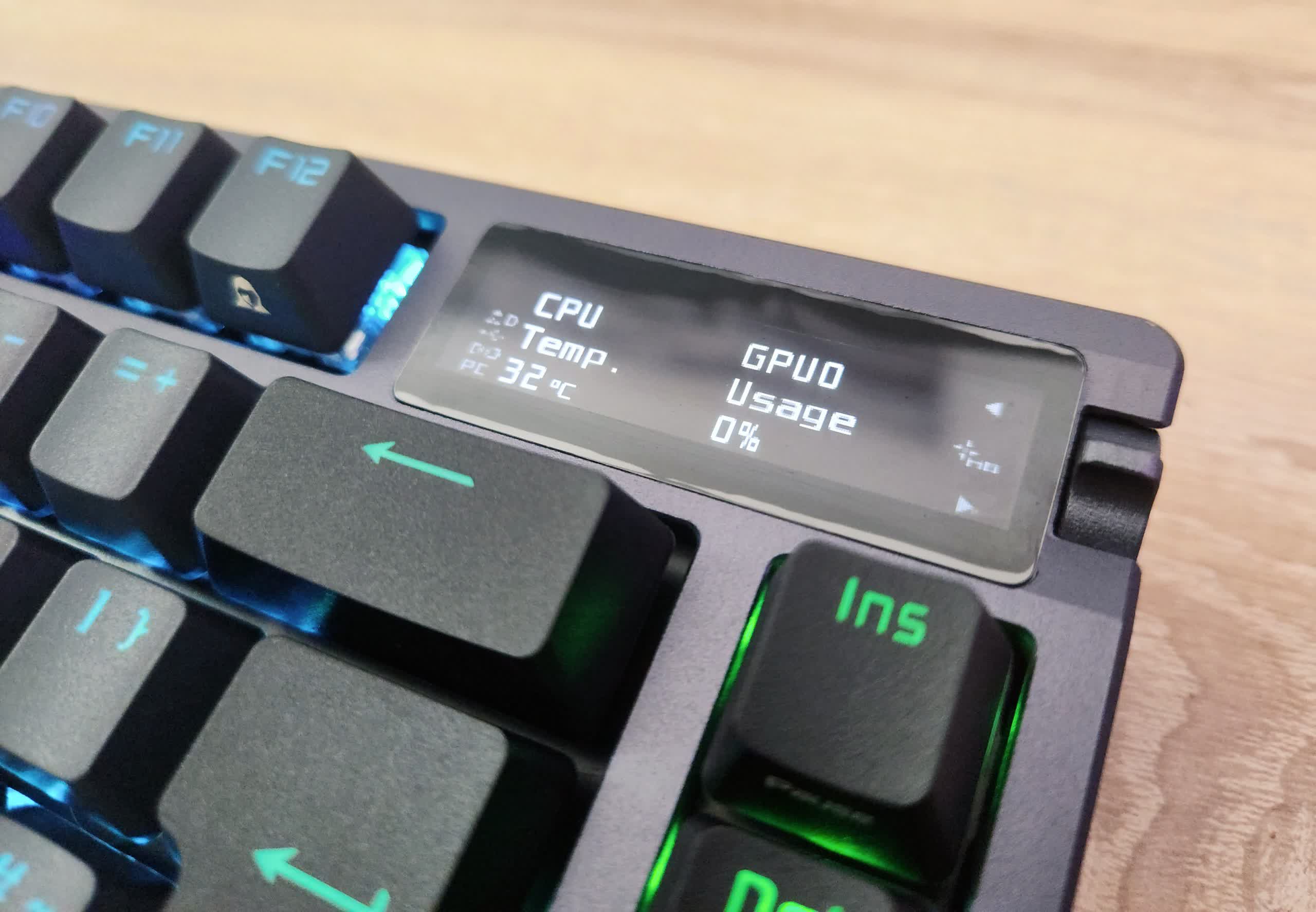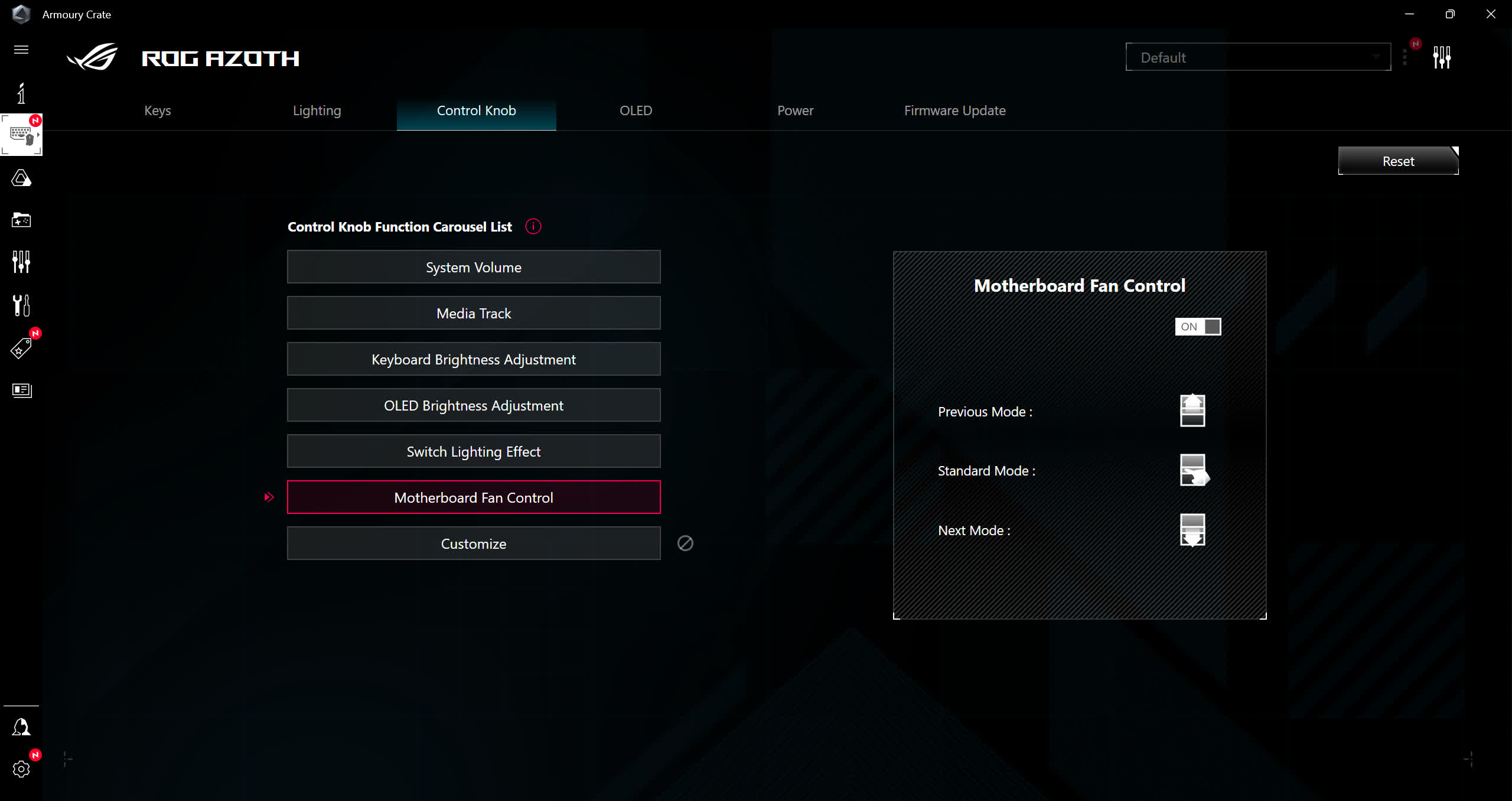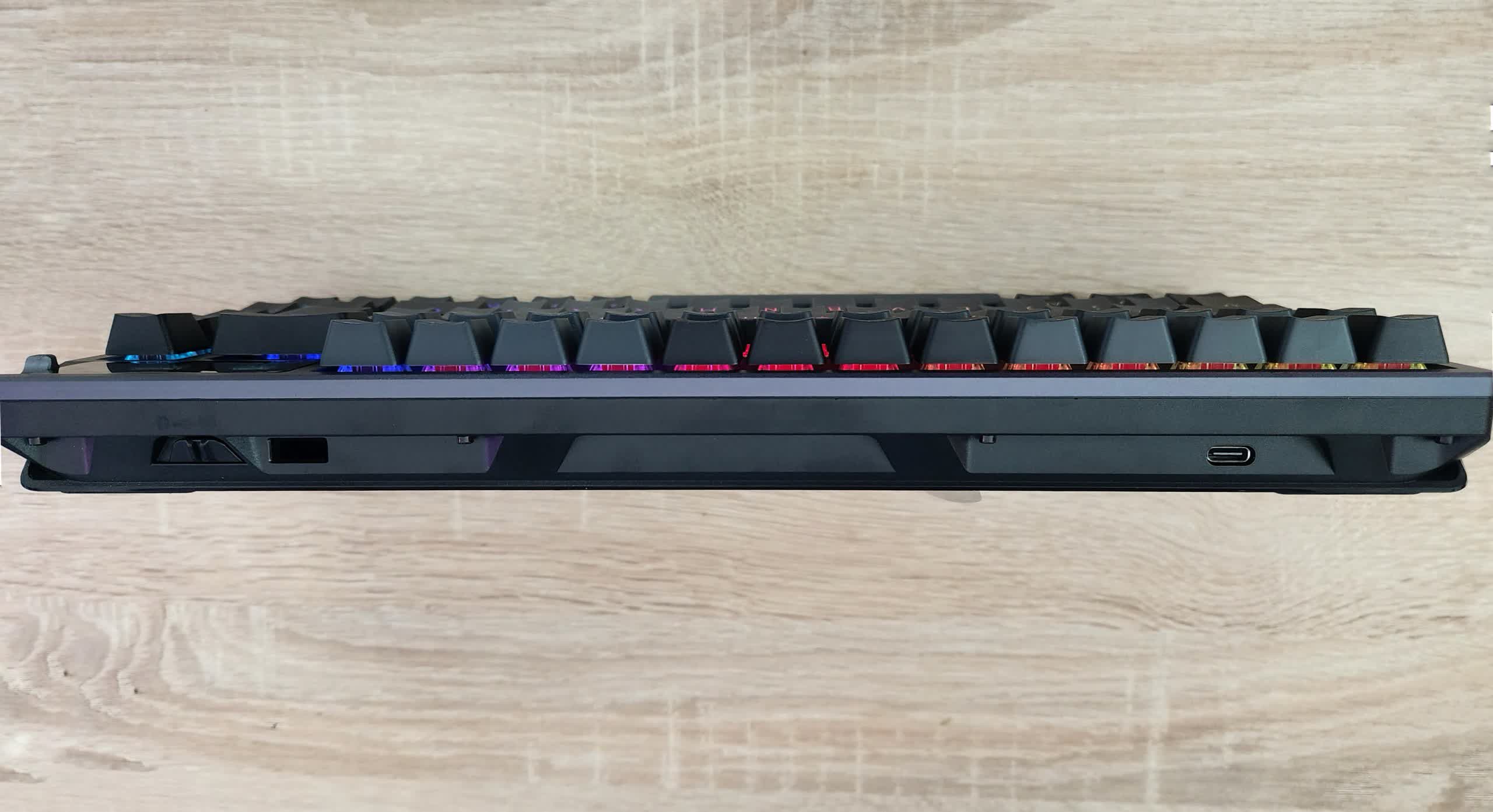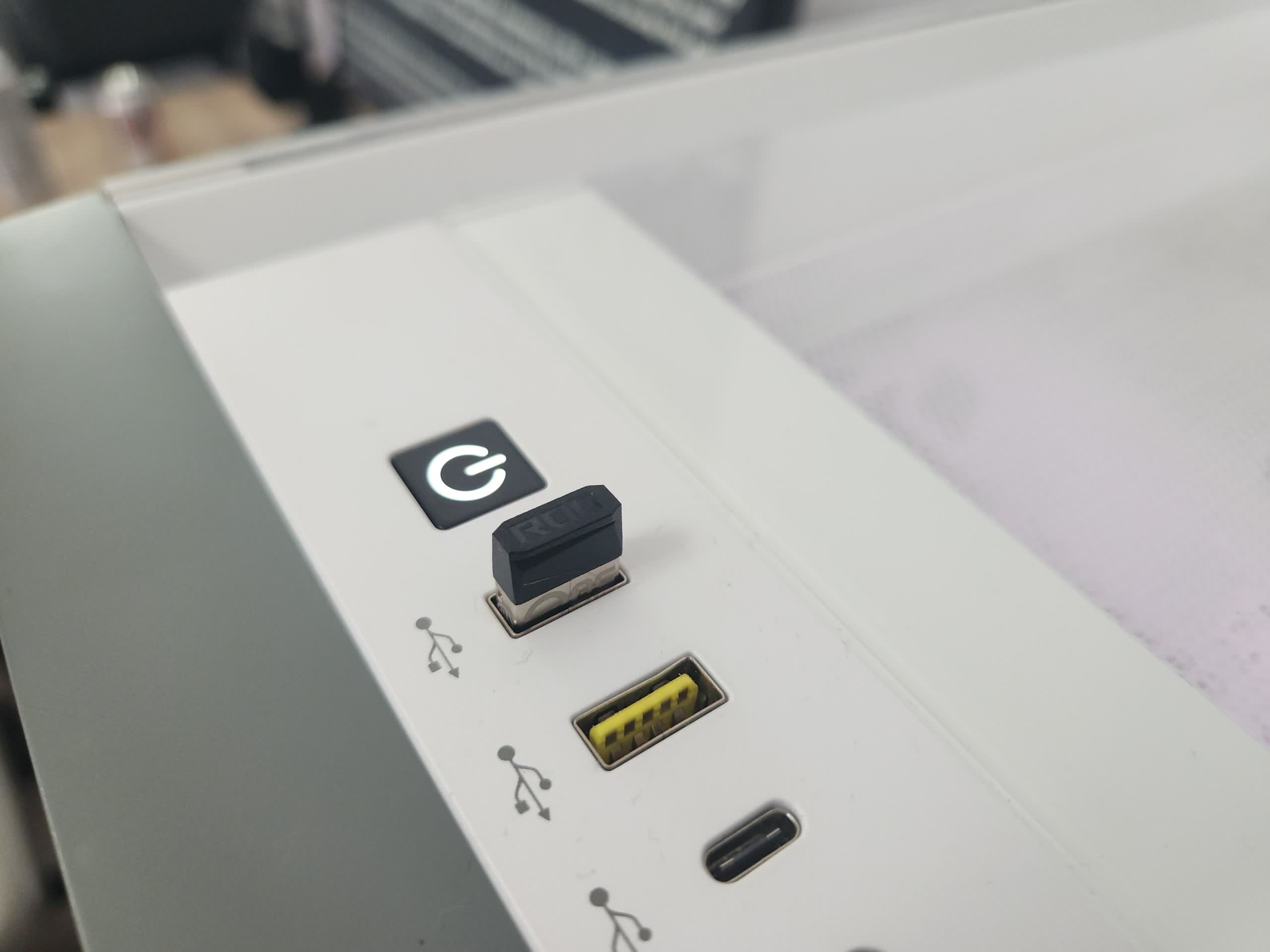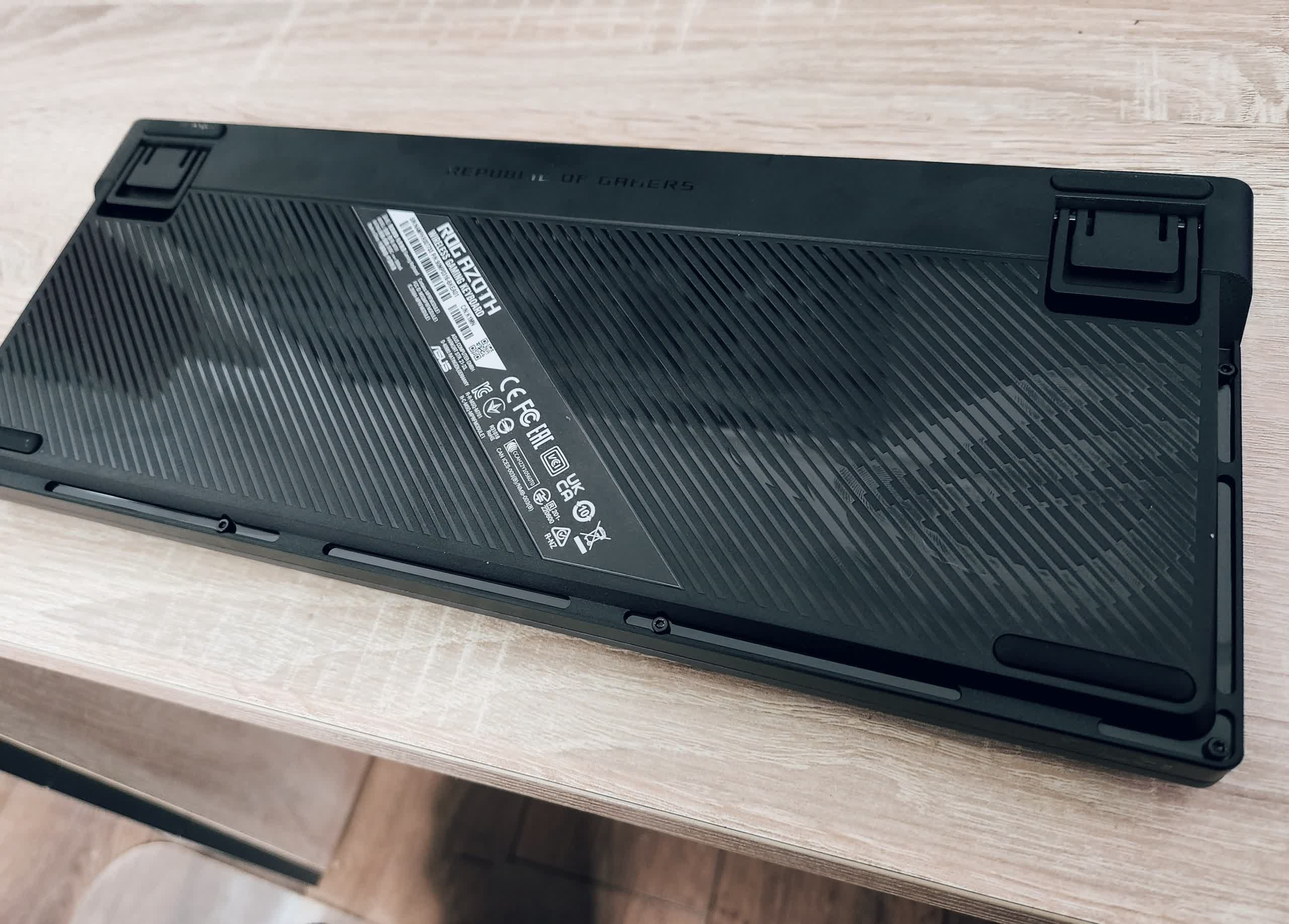What would you buy if you had $250 to spend on something PC-related? A second-hand RTX 2060? A high refresh-rate 1440p monitor? How about an Intel Core i7-12700KF? Alternatively, you could blow the lot on the ROG Azoth, a wireless 75% keyboard from Asus.
That's quite a price tag for any keyboard, but then the Azoth isn't just any keyboard.
The Asus ROG Azoth has plenty of features that make it stand out from a crowded market: a silicon gasket mount, tri-mode connectivity, hot-swappable switches, and a lube kit. But the highlights for many people will probably be the tiny OLED display in the corner and the fact it's one of those rare keyboards that are great for both typing and gaming.
Before buying my much-loved Razer Huntsman Elite, I owned a tenkeyless keyboard for quite a while, so I'm used to these small form factors. But I was surprised to see that the Azoth is even smaller than I expected (12.83 inches in length), squeezing four dual-functional navigation keys into one column on the right and the arrow keys beneath.
From the moment you open the box, everything about the ROG Azoth screams luxury, from the Apple-like packaging to the soft cotton cloth covering the keyboard itself. The first thing you're likely to notice is just how heavy and well-made the keyboard feels; at 2.6 pounds, it's virtually the same weight as the Huntsman Elite.
That's no bad thing as this little keyboard is so sturdy that you could use it as a weapon. It's premium build quality, enhanced by a cold-to-the-touch metal top plate and durable doubleshot PBT keycaps.
Charging the Asus Azoth is done via the included 6.5-foot braided USB-C to USB-A cable. Once juiced, it can be linked to a PC via Bluetooth or 2.4GHz wireless by removing the tiny receiver that sits neatly inside the keyboard and plugging it into a spare USB-A port. You can also use a wired connection, of course.
There are plenty of features in the Azoth that make it compelling, though the 2-inch OLED panel in the corner will likely be the one that makes friends go, "Oooo!" Using Asus' Armory Crate software – which is the worst part of this experience – it can be programmed to show preset or uploaded custom animations/GIFs, banners with custom messages in a variety of styles and fonts, spectrum equalizers that kick in when music is played, or system information, which is my favorite.
Choosing system information gives the option of displaying frequency, voltage, temperature, or usage for the GPU, CPU, or DRAM, depending on which metric is picked.
Checking some of these stats against GPU Tweak Monitor and HWInfo64 showed them to be mostly accurate.
Next to the OLED screen is a small 3-way control knob that gives a satisfying click when activated. Again, its function can be chosen from a list: system volume, media playback controls, keyboard brightness, OLED display brightness, switching lighting effects, or motherboard fan control. It can also be customized with a sixth option for launching applications and websites, running macros, and more.
Asus says the Azoth offers an unrivaled typing experience, and it's difficult to argue with that. Its silicone mount design uses three layers of dampening foam and silicone to cushion the keys as they're depressed.
It sounds and feels lovely - almost squishy but in a good way, like petting a Shiba Inu - and they're incredibly satisfying for fast and/or heavy-handed typists and anyone within earshot. Check out the comparison with Razer's clicky optical switches in the video below. The space bar is especially impressive, no matter where it's pressed. Even without a wrist rest, this is a typist's dream.
Asus uses its own proprietary key switch solution in the Azoth rather than the usual Cherry MX switches, but these can be replaced if they're not to your liking. The review model comes with ROG NX Red switches, which have 40g of actuation force and a 1.8mm actuation point. They're smooth and linear without a bump or click. You can also buy this keyboard with tactile NX Brown and or clicky NX Blue switches.
The Azoth switches are pre-lubed, naturally, but Asus provides all the tools you need to remove and lube both its own NX and Cherry switches: a lube station, switch opener, brush, and a tub of Krytox lubricant. There's even a how-to video available.
The Azoth is without a doubt excellent for typing, but how does it fare with games? This is a wireless keyboard, after all. Asus promises low-latency, reliable connections with its SpeedNova wireless technology in 2.4 GHz mode, and it lives up to that promise. Cyberpunk 2077, Atomic Heart, and other FPS titles feel responsive with no noticeable lag or delays.
Also, while this applies to all small wireless keyboards, I enjoyed being able to easily move the Azoth into the perfect position for my hands to rest on WASD without fuss or tangled wires.
Although I could instantly connect using Bluetooth via my motherboard's receiver, it didn't feel quite as snappy as the 2.4 GHz mode, and the OLED's functionality is limited to showing images and animations.
Battery life is another fantastic element of the Azoth. Asus promises 2,000 hours using the 2.4GHz connection with the OLED screen and lighting off. I charged the keyboard almost two weeks ago and have been using it for around 10 hours per day with the lights activated and hardware info on the OLED, yet I still have 40% battery life left.
Ultimately, the Azoth has very few faults. The only negatives are the high price, though it's not the only keyboard this expensive (the similar SteelSeries Apex Pro TKL Wireless is also $250), and the Armory Crate software, which can be buggy, slow, and difficult to use.
So, is the Asus ROG Azoth worth $250? That depends on the person. Assuming you want the best 75% keyboard that's luxurious, fantastic for gaming and typing, sturdy, wireless, highly customizable, and has a very cool OLED screen, then yes, it is worth the money.
